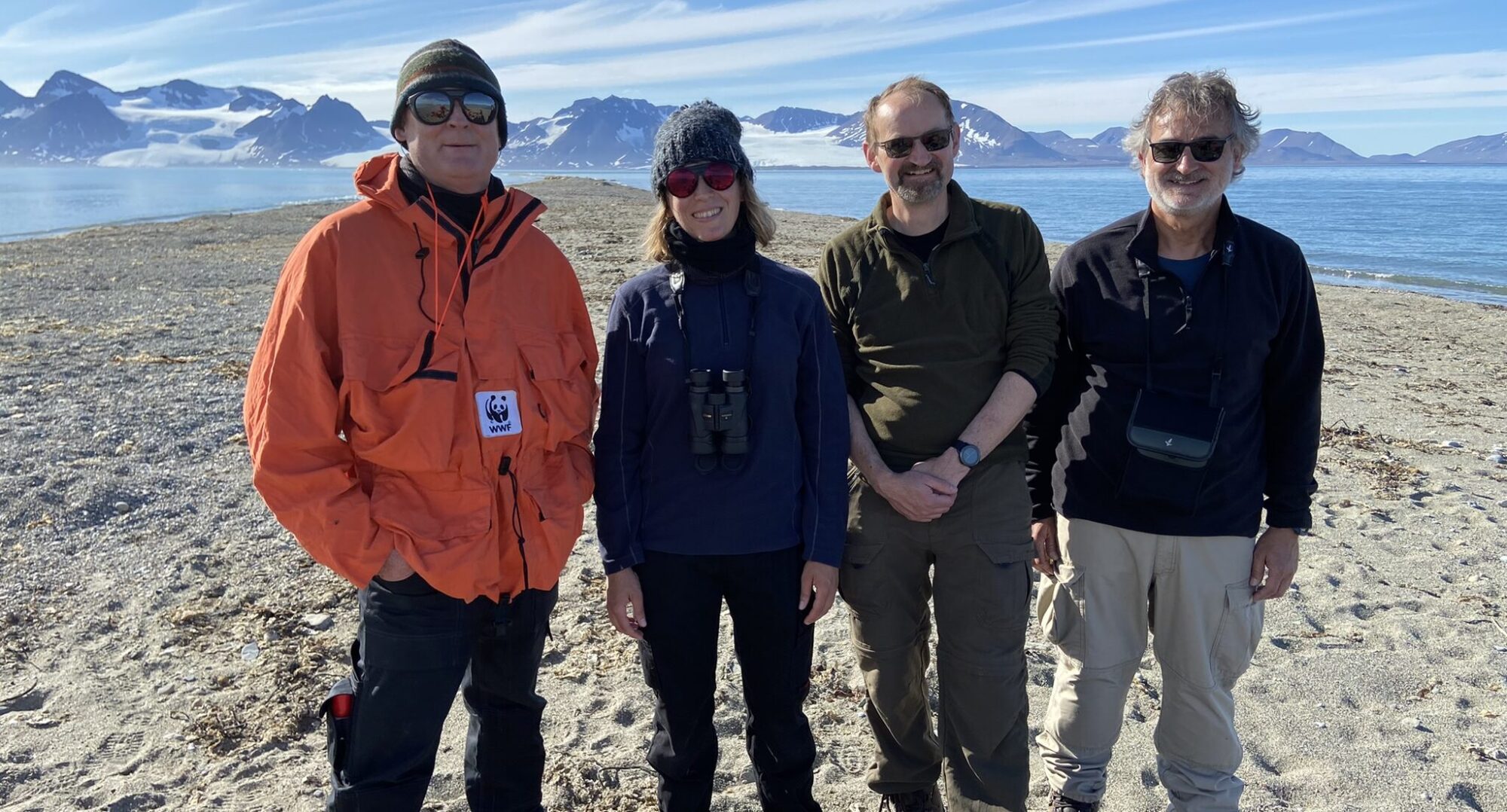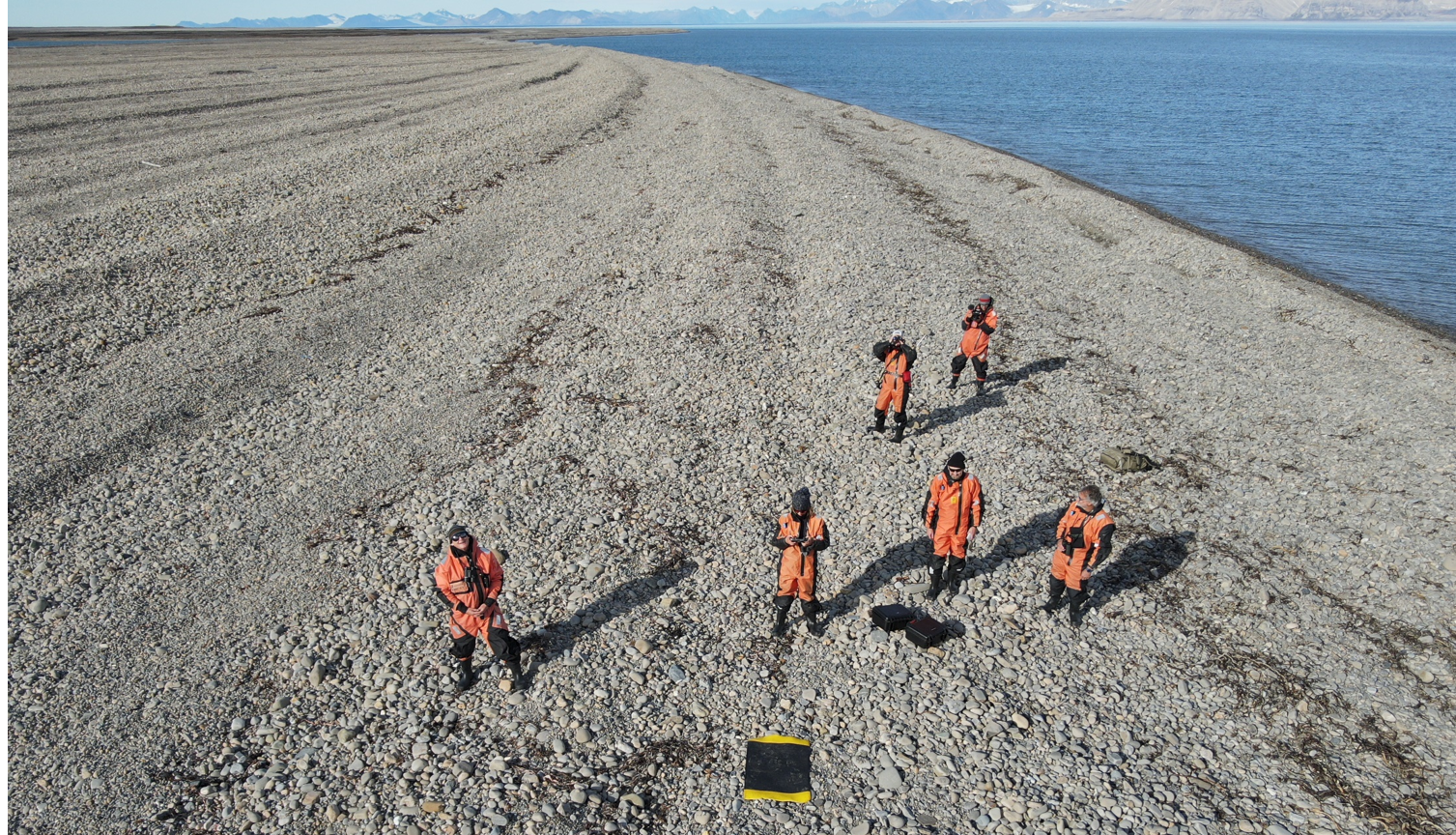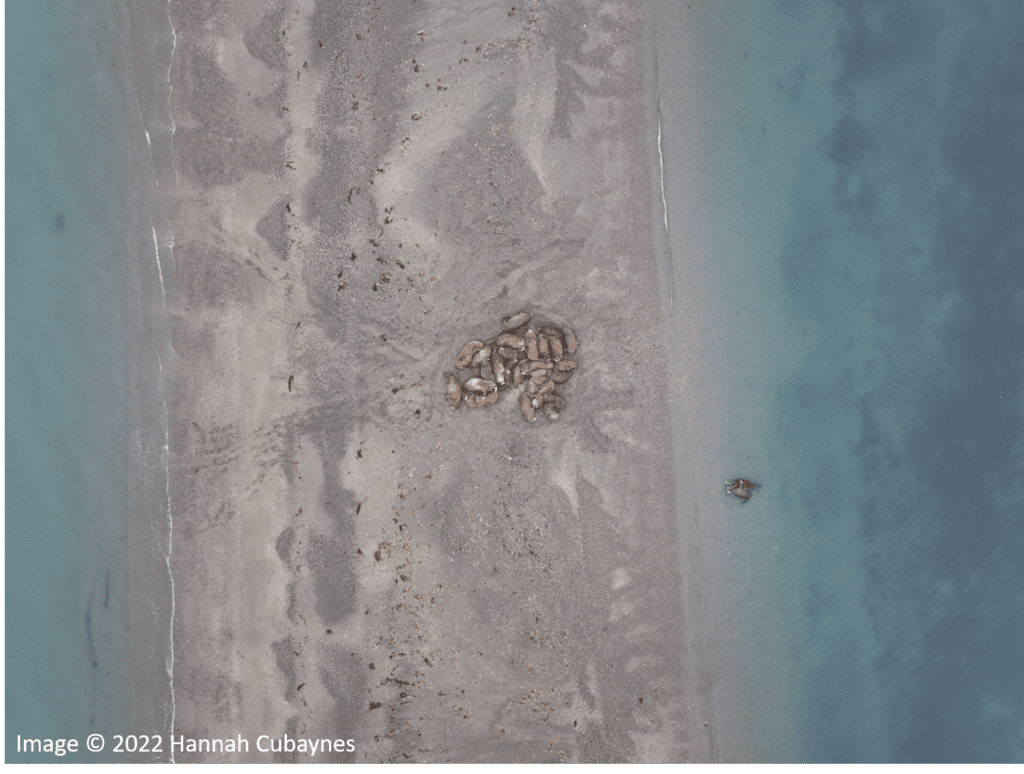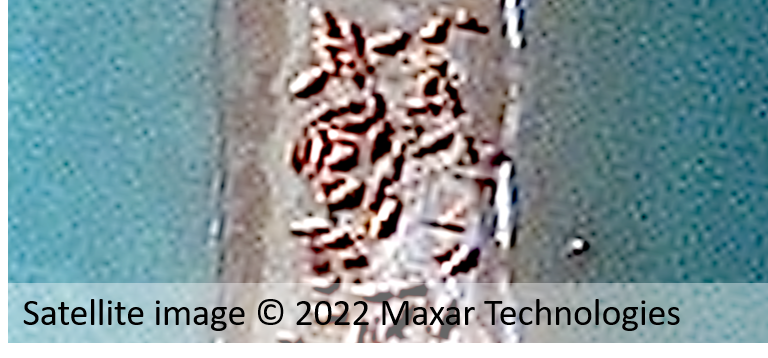Photo: naturepl.com/Tony Wu/WWF
Walrus from Space
Can satelite images be used to count walruses?
Last week, a team of scientist from the World Wildlife Fund (WWF) and Britisch Anatarctic Survey (BAS) visited Ny-Ålesund Research Station to test out a technique to verify counting of walrus in images taken from satelites in space.
The visit to Ny-Ålesund is a part of the joint research project between WWF and BAS called Walrus in Space with the aim of learning more about how walrus will be impacted by the climate crisis.


WWF and BAS are working to better understand these Arctic animals, using space satellites to capture thousands of high-resolution images of walrus congregated on more than 25,000km2 of Arctic coastline – an area larger than Wales. Read more about the project here.
Comparing images from drones and satelites
Together with the Norwegian Polar Institute, WWF, and BAS are using drones to get pictures of the exact numbers of specific haul-out sites of walruses and compare these images with pictures taken by satellites.
The technique was tested on a few selected haul-out sites in Svalbard, and will be used to ground truth the feasibility of this technique. The technique involves comparing images from drones with images from the satellites to enable the counting of walruses on satellite images in a more precise way.


Approaching the walrus to count and take images was carried out with strict guidelines to not disturb the animals at the beach. The usage of drones also makes it easier to count the walrus without the need to be too close to the haul-out site.
With help form the public
BAS and WWF are also seeking the public’s help to search for walrus in thousands of satellite images taken from space, with the aim of learning more about how walrus will be impacted by the climate crisis.
From the comfort of their own homes, aspiring conservationists around the world can study the satellite pictures online, spot areas where walrus haul out onto land, and then count them. The data collected in this census of Atlantic and Laptev walrus will give scientists a clearer picture of how each population is doing – without disturbing the animals. It’s hoped that half a million people worldwide will join the new walrus from space research project. Read more about how to contribute to the project here.
Did you find what you were looking for?